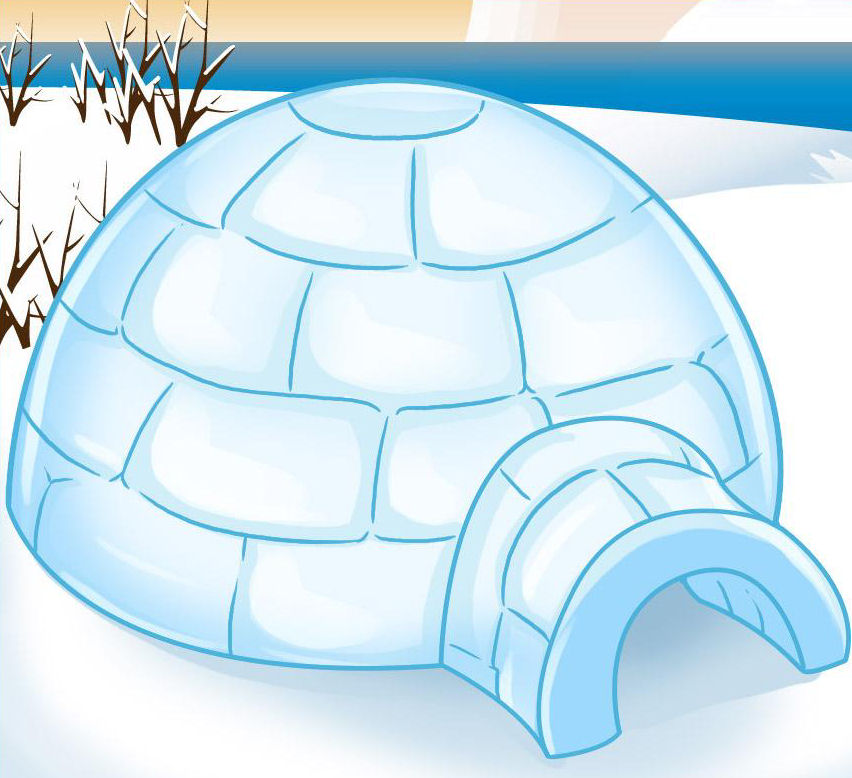69.WHY DOESN’T AN IGLOO MELT INSIDE?
Even though stone and wooden houses have become more popular among the Eskimos, they still construct the igloo for special occasions or while on a journey. It is quickly built and it defies any kind of weather.
A trench is cut about 1.5 meters long and 50 centimeters deep in a new snow drift. Then, from the face of the trench, blocks are cut with a knife. These are shaped so that they lean inward when set on edge.
A circle of these snow blocks is laid and then shaved down so that as the Eskimo builds there will be a narrowing spiral. The material is cut from the inside of the house as the man works. Then a keystone, with edges wider above than below, is dropped into the space at the top. Then all the cracks are filled in with soft snow. A small igloo can be built in this way in a couple of hours.
When the house has been built, the woman takes over. She lights her blubber lamp and makes it burn as hot as possible. Then she closes the door with a block of ice and makes everything airtight. Now the snow begins to melt. But because the dome’s roof is curved, it doesn’t drip. Instead, it soaks gradually into the blocks so that they are nearly wet through.
When the blocks are sufficiently wet, she puts out her lamp and opens the door. The intensely cold air rushes in, and in a few minutes, the house is transformed from a fragile building of snow to a dome of ice! It is now so strong that a polar bear can crawl over the roof without breaking it in. And because it is so solid and hard, it doesn’t melt and provides a snug shelter.
Of course, when the winter ends and the temperature rises, the igloo does begin to melt, and it is usually the roof which first caves in.



Leave a Reply